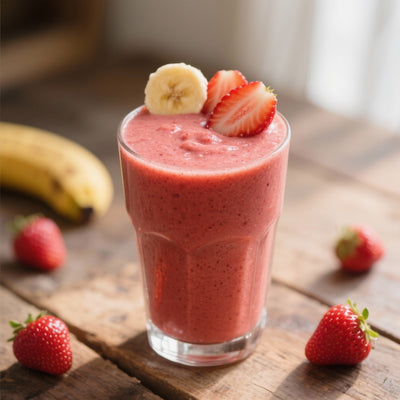My Guide to a Successful Digital Detox: Find Balance and Serenity
In a hyper-connected world, it's easy to feel overwhelmed by the constant stream of information, notifications, and digital demands. This overload can lead to stress, anxiety, decreased concentration, and even affect our sleep. If this sounds familiar, it might be time to consider a digital detox. This comprehensive guide will walk you through the process of regaining balance and well-being in your digital life.
A digital detox doesn't necessarily mean a complete break from technology, but rather a more conscious and intentional use. It's about taking back control of your time and attention, reconnecting with the real world, and preserving your mental health. Ready to embark on this journey?
In this article, we'll explore the reasons for doing a digital detox, the different approaches available, practical tips for successfully disconnecting, and the benefits you can reap. You'll discover how to implement personalized strategies for a healthier and more fulfilling digital life.
Why Do a Digital Detox? The Unexpected Benefits
The reasons for wanting to disconnect from the digital world are numerous and vary from person to person. Here are some of the most commonly observed benefits:
- Reduced stress and anxiety: Fewer notifications and social comparisons mean less daily pressure.
- Improved concentration and productivity: By limiting distractions, you gain efficiency and focus.
- Better sleep quality: Exposure to blue light from screens disrupts sleep. Avoiding them promotes more restorative rest.
- Strengthening interpersonal relationships: More time spent with loved ones, without being distracted by your phone.
- Rediscovering passions and activities: By freeing up time, you can dedicate yourself to what you are truly passionate about.
- Improved mental health: A healthy distance from social media can reduce feelings of jealousy, dissatisfaction, and isolation.
A study from the University of California showed that simply reducing social media use by 30 minutes a day can significantly improve well-being and reduce feelings of loneliness.
Different Approaches to Digital Detox: Find the One That Suits You
There's no single method for a successful digital detox. The ideal approach depends on your needs, habits, and goals. Here are a few options to consider:
- The complete detox: Total disconnection from all digital devices for a set period (one day, one weekend, one week…).
- Partial detox: Limiting the use of certain devices or applications (social networks, video games, etc.) for a given period.
- Thematic detox: Focus on a specific aspect of your digital life (emails, notifications, news…) and setting up rules to limit its impact.
- The gradual detox: Gradually reduce your screen time, starting with small steps and increasing the duration over time.
The important thing is to choose a realistic and sustainable approach that you can integrate into your daily routine. Don't hesitate to experiment and adjust your strategy based on your results.
Practical Tips for a Successful Digital Detox: The Step-by-Step Guide
Here are some practical tips to help you implement your digital detox:
- Set yourself clear goals: Why do you want to do a digital detox? What benefits do you hope to gain from it? Defining your motivations will help you stay committed.
- Choose the right approach: Determine which type of detox is best suited to your situation and needs.
- Plan your disconnection: Choose a suitable time, when you will have fewer demands and more free time.
- Prepare your environment: Inform your loved ones of your decision and ask for their support. Configure your devices to limit distractions (disable notifications, delete apps, etc.).
- Find alternatives: Plan alternative activities to occupy your free time (reading, sports, creative hobbies, outings in nature…).
- Be kind to yourself: It's normal to have moments of weakness. Don't get discouraged and resume your detox as soon as possible.
- Take stock: After your digital detox, take the time to analyze the results. What have you learned about your digital usage? What changes do you want to maintain?
Remember that digital detox is a personal and evolving process. The goal is not to completely deprive yourself of technology, but to learn to use it in a healthier and more balanced way.
After the Detox: Adopting Sustainable Digital Habits
A digital detox is a great starting point, but it's important to establish lasting habits to avoid falling back into old patterns. Here are a few suggestions:
- Set screen time limits: Use apps or built-in settings to track and limit your usage time.
- Turn off unnecessary notifications: Keep only essential notifications and disable those that distract you.
- Create screen-free zones: Define areas where the use of digital devices is prohibited (bedroom, dining table, etc.).
- Plan disconnection times: Schedule specific time slots to completely disconnect from the digital world.
- Be aware of your triggers: Identify the situations or emotions that lead you to overuse your digital devices and find alternatives.
By adopting these habits, you can maintain a healthy balance between your digital life and your real life, and fully enjoy the benefits of disconnecting.
Take Back Control of Your Digital Life: Get Started Today
A digital detox is a powerful tool for restoring balance, reducing stress, and improving your well-being. By following the advice in this guide, you can develop a personalized strategy for a healthier and more fulfilling digital life. So, what are you waiting for?
If you'd like to delve deeper, feel free to check out our other articles on digital well-being and technological minimalism. You'll find additional tips and tools to support you on your journey.











